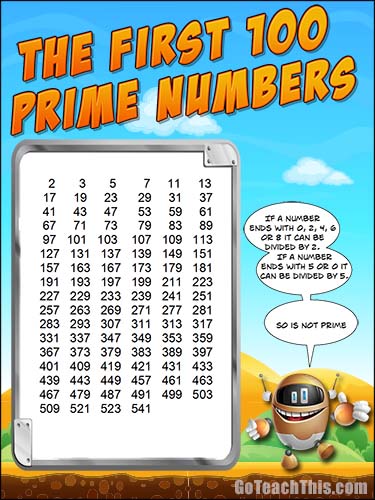

Encryption is used to store the code in a secret way. Since the code needs to be kept secret, it cannot be stored in cleartext on the card. This card is protected by a secret access code.

Most people have a bank card, where they can get money from their account using an ATM.It is difficult to find their prime factors, so most of the time, numbers that are probably prime are used for encryption and secret codes. Prime numbers are very important in mathematics and computer science. However, it is less complicated than methods used for very large primes, such as Fermat's primality test (a test to see whether a number is prime or not) and the Miller-Rabin primality test. This method or algorithm takes too long to find very large prime numbers. The numbers 4, 6, 8, 9 and 10 will be crossed out. At the end, the numbers 2, 3, 5, and 7 will end up circled. All of the prime numbers are circled and all of the composite numbers are crossed outįor example, one could carry out this method on a list of the numbers from 2 to 10. (This is the final step.) You are done.If b is not in the list, go to the final step. If b is a number in the list that has not been crossed out, go to the 3rd step. If b has been crossed out, go back to the previous step.When b is 3, you will circle 3 and cross out 6, 9, 12, and so on. (For example: When b is 2, you will circle 2 and cross out 4, 6, 8, and so on.Repeat counting up b more numbers and crossing out numbers until the end of the list. Starting from b, count up b more in the list and cross out that number.On a sheet of paper, write all the whole numbers from 2 up to the number being tested.At the start, all the numbers are plain: not circled and not crossed out. Each circled number is prime and each crossed-out number is composite. As one goes through the method, they circle some numbers in the list and cross out others. The method works with a list of numbers, and a special number called b that changes during the method. It catches numbers that are not prime (like a sieve), and lets the prime numbers pass through. There is a simple method to find a list of prime numbers. However many scientists and mathematicians are still searching to find it as part of the Great Internet Mersenne Prime Search. One of the most famous mathematicians of the classical era, Euclid, recorded a proof that there is no largest prime number. One of the unsolved problems is Goldbach's conjecture. One of the answers is the prime number theorem. When a number is larger, it is more difficult to know if it is a prime number. The fundamental theorem of arithmetic states that every positive integer can be written as a product of primes in a unique way, though the way the prime numbers occur is a difficult problem for mathematicians. The prime numbers are the numbers other than 1 which are not equal to m × n. The smallest composite number is 4, because 2 x 2 = 4. If the number is equal to any other natural numbers multiplied, then the number is called a composite number. Any natural number is equal to 1 times itself. 11 must therefore be a prime number.Ī prime number is a natural number of a particular kind. No matter how the rectangle is arranged, there will always be blocks left over, except for the rectangle with sides of lengths 11 and 1. This rectangle has an area of 12, because all 12 blocks are used. The number 12 is not prime, because a rectangle can be made, with sides of lengths 4 and 3. Here is another way to think of prime numbers.


 0 kommentar(er)
0 kommentar(er)
